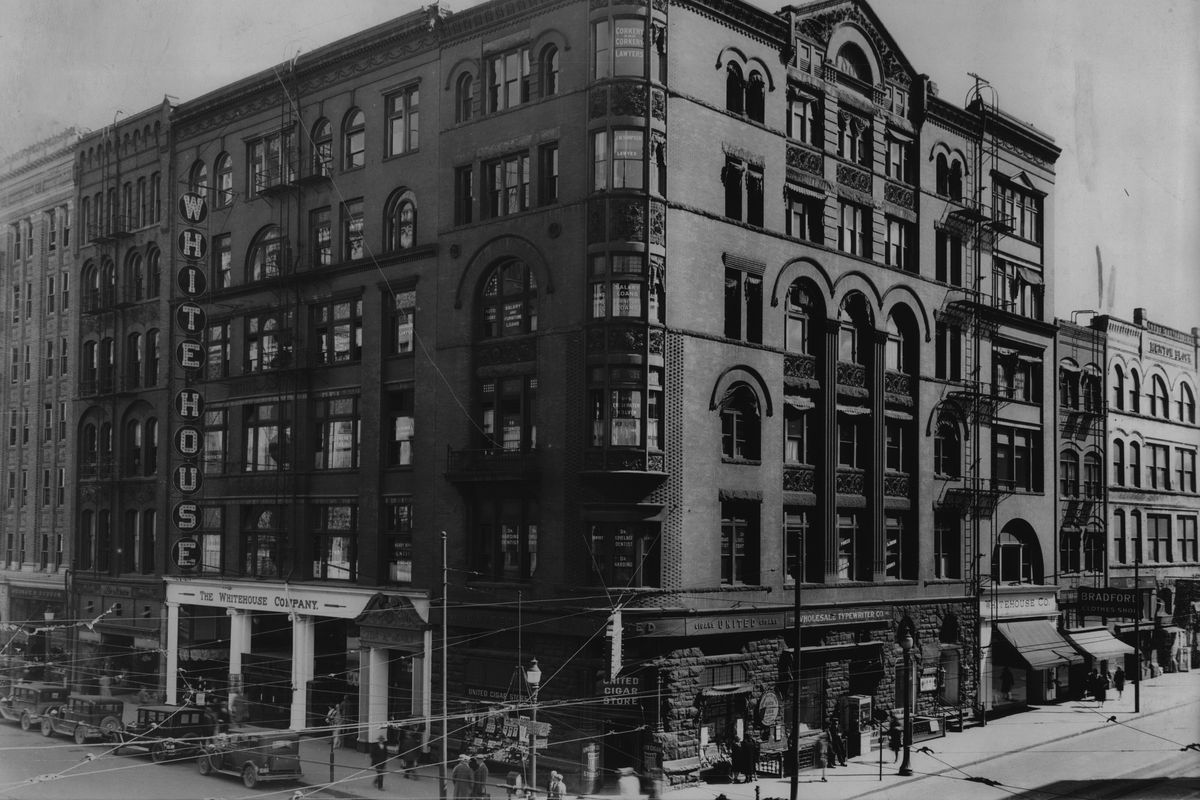Then and Now: The Rookery

From 1890 until the buildings were demolished in 1933, four interconnected buildings wrapped around the southeast corner of Howard Street and Riverside Avenue were simply called the Rookery, the word for a colony of birds’ nests.
The first of the buildings to be rebuilt after the great fire of 1889 on the southeast corner of Howard and Riverside was the six-story Spokane National Bank, which had been in the same spot before the fire. The bank was opened in 1888 by William Taylor, Charles Hussey and Warren Hussey. Railroad builder Daniel Corbin was on the board, and it was partnered with banks in Murray, Wallace and Wardner, Idaho. The board quickly hired the new firm of architects Kirtland Cutter and John C. Poetz to design the replacement building.
Kirtland Cutter, born 1860 near Cleveland, Ohio, moved to Spokane in 1886 to work for his uncle, banker Horace Cutter. Though he did work as a teller initially, he had studied architecture and began designing homes for the city’s wealthy citizens. His body of work includes the Sherwood building, the Steam Plant, the Spokane Club and many homes.
Cutter designed the Corbin home, which is now the Corbin Art Center.
The White House building, also by Cutter and Poetz, wrapped around the bank and fronted both Howard and Riverside. The White House, later just called Whitehouse, advertised themselves as sellers of dry goods and carpets.
Upper floors were a warren of narrow hallways and small offices.
The Riverside Building, also six stories, terminated the complex on the east and the four-story Harrington building was just south on Howard.
Spokane National Bank, overextended with mining speculation, was shuttered in December 1890.
The Great Depression took its toll on businesses in the Rookery. Real estate investor Charles Sweeny bought the complex in 1933 and tore it down. Architect Gustav Pehrson designed the new Rookery as a three-story art deco building glazed in white terra cotta tile. It was home to Equitable Savings and Loan and various retail stores for many years.
The new Rookery was torn down in 2006, along with the adjacent Mohawk building, leaving a large parking lot. The two-year struggle to save it by preservationists led to a new city ordinance requiring redevelopment plans in place before demolition.